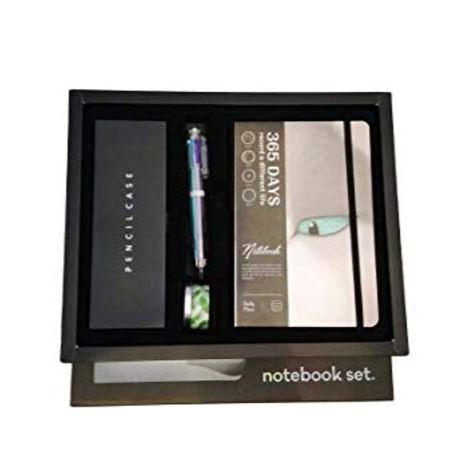Call Back
Everything you need to know about bullet journaling

The Basics
The first question that comes to mind is that what exactly is a Bullet Journal or a BUJO? Is it a fancy journal, an out of the box elaborate diary, or is it something indecipherable? In the paragraphs to come, one may find the answers to all such questions that may come up in the confines of one's cranial workshops.
So basically a Bullet Journal, is nothing but a regular notebook or diary that logs your tasks and achievements on a monthly or daily basis, which makes it an awesome management tool! The brain behind this creative concept can be attributed to Ryder Carroll, a designer in New York City. It helps one stay organized in an increasingly fast paced world. It's a life hack and a hard copy record of everything you need to do, remember or pay attention to.
Also this ingenious organizational tool doesn't need fancy electronic gadgets, all you need is a pen and a notebook. It's really that easy and pocket friendly! Wondering which notebook to buy?! Team Bigsmall has an entire section dedicated to quirky diaries and pens. View the entire collection here: Notebooks & Pens.
Elements of a bullet journal
Now that you have zeroed in on your chosen diary and pen, the first thing you need to do is number the pages. Once you are done with this simple task, let's get down to understanding the five main elements of bullet journaling.
1. Index: Adding an index to your journal is the most sensible thing one can do, because it helps to know exactly how the information and tasks have been segregated. All the planning and logging will be a waste if one can't find the information at a glance.
2. Rapid Logging: The name says it all. It is a quick way to maintain records. This technique involves making use of notations, short sentences and abbreviations wherever possible.
3. Logs: The bullet journal should contain logs which are a record of what needs to be accomplished. Ryder Carroll recommends that you use a future log, a monthly log, and a daily log.This way one can keep sight of what needs to be accomplished on a micro and macro level. One can also keep track of the progress over time.
4. Collections: One can consolidate related topics under a relevant collection for ease of management. You can add separate collections for books you want to read, restaurants you’d like to try, or even a separate collection for tracking fitness goals.
5. Migration: Migration involves moving pending tasks into current or future logs so that the tasks remain visible.
Point to be noted: The goal behind maintaining a bullet journal is to weed out all the unnecessary information and accomplish more on the priority tasks. BuJo is more about following than the system than the content. Fill in the pages with what really matters to you.
Getting started on your Bullet Journal
1. Choose your notebook and pen: Here you can go all creative and pick up quirky stationery items. Be it the Girl Boss Notebook, or the 365 Daily Planner Notebook, there is something in our quirk store to match everyone's vibe. If spaced out is your style you will surely love the Astronaut Moon & Star Pens - Set of 2.
2. Number the pages. Open your notebook to the first spread and title them Index at the top of the page.A spread consists of two blank pages next to one another.
3. Open the next blank spread and title the pages Future Log.
4. Mention your Future Log in the index.
5. Go to the next spread and title it Monthly Log.
6. Create spaces for monthly entries. Just remember to log the page numbers in your index.
7. Open the next spread and title these pages Daily Log.
8. To register your first entry record the date.
9. Begin recording tasks, events, or notes.
- Tasks use a dot bullet (•)
- Events use an open circle bullet (o)
- Notes use a dash or hyphen (-)
- Use a star (*) to signify important tasks
10. Once you have completed your first month, begin your next monthly log.
11. Revisit your previous monthly log and mark completed tasks with an X.
12. Review open tasks. Consider whether the task is still relevant.
- If the task is no longer relevant, mark it through with a line (task).
- If your task needs completed in future months, make the dot a left arrow (<) and migrate it to the appropriate place in the future log.
- If the task needs completed in the current month, use a right arrow (>) and record the entry in the current month.
13. Next, begin any collections on a new spread to keep track of related topics.For example, you may have a grocery list or track ideas for an upcoming birthday.
14. Record the page number and collection in your index.
Happy Bullet Journaling!!
Why Bullet Journaling is such a great idea?
- You can put everything is one place. No more lost or half-fulfilled to-do lists.
- Bullet journals are easily modifiable to fit your needs, habits, and schedule.
- They don’t require a huge time investment.
- All topics are indexed and can be found when needed.




 Home
Home Best Sellers
Best Sellers Bigsmall Originals
Bigsmall Originals New Products
New Products Corporate
Corporate Personalised Gifts
Personalised Gifts Gadgets
Gadgets All Products
All Products




Leave a comment